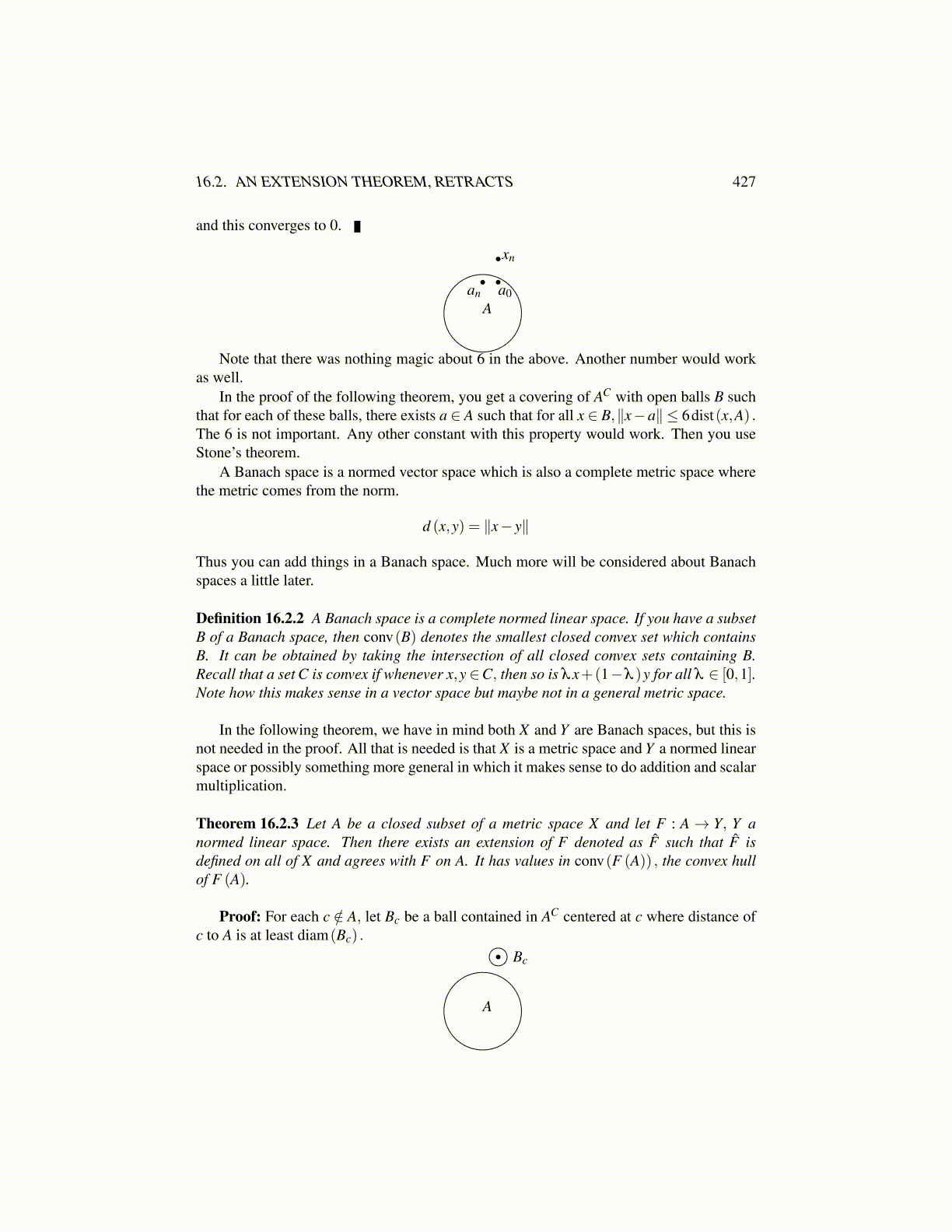
16.2. AN EXTENSION THEOREM, RETRACTS 427
and this converges to 0.
a0
xn
anA
Note that there was nothing magic about 6 in the above. Another number would workas well.
In the proof of the following theorem, you get a covering of AC with open balls B suchthat for each of these balls, there exists a ∈ A such that for all x ∈ B,∥x−a∥ ≤ 6dist(x,A) .The 6 is not important. Any other constant with this property would work. Then you useStone’s theorem.
A Banach space is a normed vector space which is also a complete metric space wherethe metric comes from the norm.
d (x,y) = ∥x− y∥
Thus you can add things in a Banach space. Much more will be considered about Banachspaces a little later.
Definition 16.2.2 A Banach space is a complete normed linear space. If you have a subsetB of a Banach space, then conv(B) denotes the smallest closed convex set which containsB. It can be obtained by taking the intersection of all closed convex sets containing B.Recall that a set C is convex if whenever x,y ∈C, then so is λx+(1−λ )y for all λ ∈ [0,1].Note how this makes sense in a vector space but maybe not in a general metric space.
In the following theorem, we have in mind both X and Y are Banach spaces, but this isnot needed in the proof. All that is needed is that X is a metric space and Y a normed linearspace or possibly something more general in which it makes sense to do addition and scalarmultiplication.
Theorem 16.2.3 Let A be a closed subset of a metric space X and let F : A→ Y, Y anormed linear space. Then there exists an extension of F denoted as F̂ such that F̂ isdefined on all of X and agrees with F on A. It has values in conv(F (A)) , the convex hullof F (A).
Proof: For each c /∈ A, let Bc be a ball contained in AC centered at c where distance ofc to A is at least diam(Bc) .
Bc
A